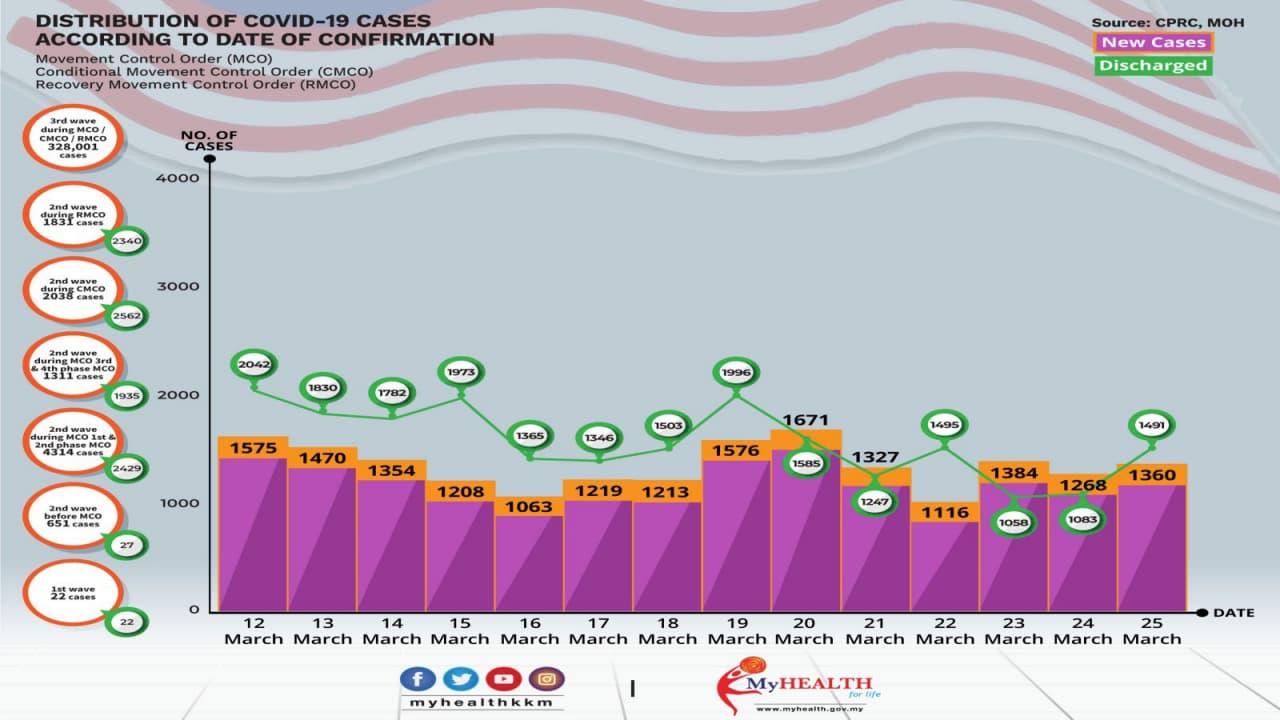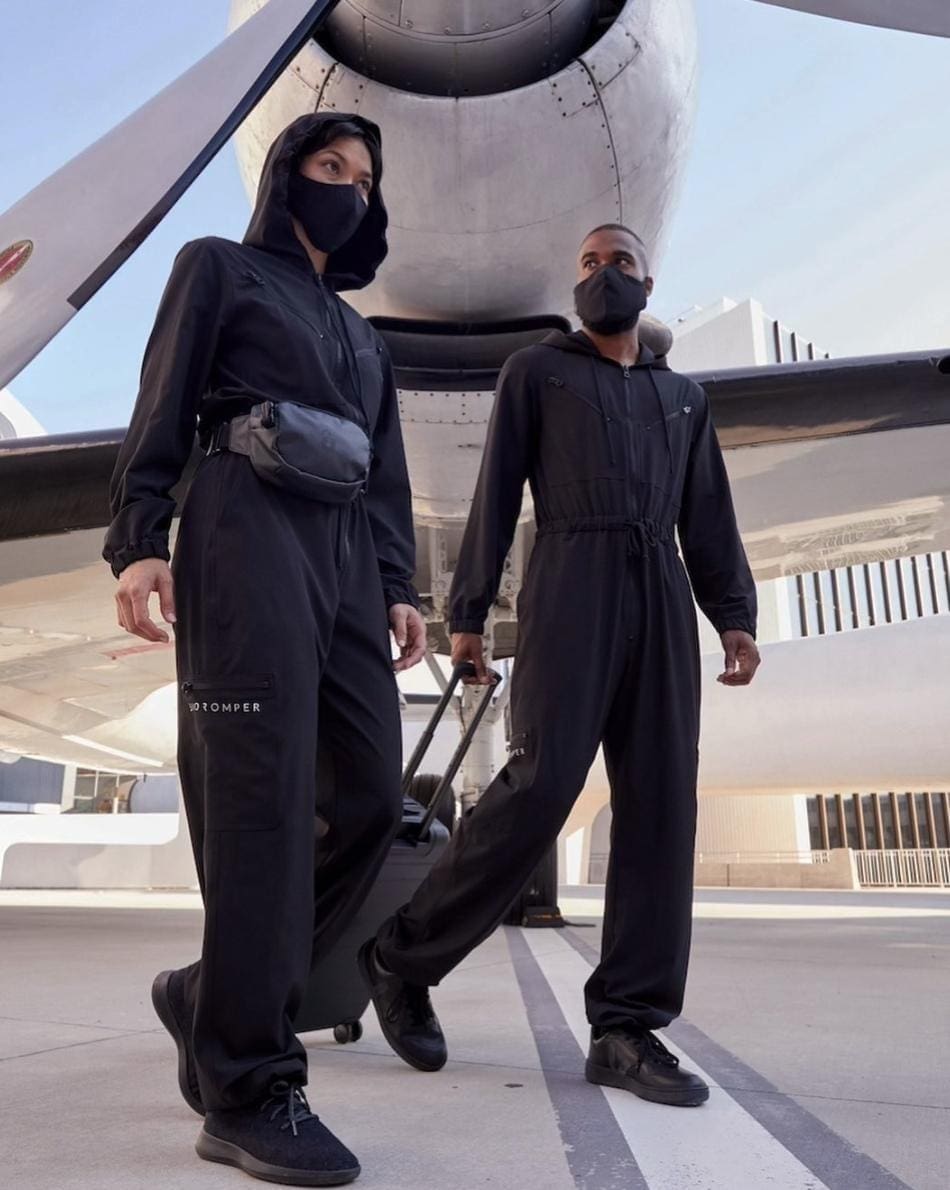In the midst of COVID-19, who would have thought this would happen. The unprecedented COVID-19. In early 2020, we were all caught off guard by an illness caused by a novel coronavirus that was first discovered in Wuhan, Hubei Province, China. Despite the fact that we are one step closer to entering the great Fifth Industrial Revolution, and the cure for COVID-19 is still being created, the war is far from over. As a result, what do we do at the very least to eliminate the virus? We ought to mitigate everything about what we wear and prevention is easier than treatment. According to the source, at room temperature, COVID-19 was detectable on fabric for up to two days, compared to seven days for plastic and metal. However, when it was exposed to high heat, the virus became inactive within five minutes.
In consequences, we must adapt to the current norm in order to reduce the number of deaths and infected patients, which has crossed 124 million worldwide. To deter COVID-19, for example, the ‘new rule’ that should be followed nowadays is to stop touching MEN’s mouth, eye, and nose and to follow WOMEN; wash hands, obey social distancing, mask up, exercise daily, and never ignore above four lines. It is, though, becoming an integral part of our lives. To adhere to the recommended procedures in order to reduce the number of sick patients.

The distribution of COVID-19 cases by Ministry of Health Malaysia
Since the pandemic began to rage in early 2020, people have been concerned about maintaining their source of income, and this is not exclusive to business players, especially B2C players. Businesses who can offer their products by retail may be concerned with their sales because they are unable to open their store during quarantine. Furthermore, it may also impact the e-commerce market players due to a loss of revenue from consumers, or customers may believe it is not worth investing their money on merchandise, especially when it comes to clothing or apparel, as they might feel “what’s the point of buying a shirt for RM60 when you just sit at home?” and “why should I buy a shirt while the old shirt still can be use?”
However, thanks to the nanotechnology services provider of textile and garment industry in Malaysia, NanoTextile to save someone’s bacon in this current situation. NanoTextile offers the opportunity for business players to “invest” in functional clothing as part of their product collections, a safety and precautionary investment. NanoTextile has in offer for the resultant clothes design and processes, but also in business models where innovations, leading to a range of functionalities, technical offerings, and production methods has become the outcome from the offerings. Nowadays, we know that people and technology somehow cannot be separated as most of it right now are prone to become technology-savvy. Everywhere we go, we need technologies to survive. Hence, in the midst of COVID-19, it’s not about the technology we hold, but the technology we wear. NanoTextile is able to make the dreams realization of, “When Fashion Meets Technology” come true. It can be seen through this theme, functionalized clothing textiles has now become a higher demand mainly in Muslimah fashion brand in this country precisely for anti-bacterial technology which is featured in Hygienic Series; one amongst many series NanoTextile has got to offer, then and now.
Hence, the core to understand how anti-bacterial technology works is first by understanding the meaning behind it. Anti-bacterial was classified, according to the dictionary, as anything that kills bacteria or suppresses their growth or reproductive potential. The main function of anti-bacterial textile is to help prevent the growth and spread of microbes from attaching tangibly on the fabric. A humid condition allows the bacterium to linger and propagate in the air roughly 45 minutes after someone sneezed. Subsequently once it is attached to our clothes, the embedded anti-bacterial properties help slow down the growth of bacteria by preventing the migration and microbial growth which is further enhanced by human body sweat secretions, skin desquamation, natural particles present in the clothing fibers or on the fibers itself, or nutrition from elsewhere in the environment.
If we can see, the condition described above is extremely beneficial in a situation rife with viruses and illnesses such as Covid-19. It’s like having two layers of protection against the virus and the environment. For example, we wear a face mask that also has anti-bacterial properties on it. As a result, consumers would feel secure. Similarly, BioRomper, a recent start-up, debuted a single product, an antimicrobial jumpsuit. When travelling, this New York formulation was designed to avoid cross-surface contamination. It’s similar to a hazmat suit, but it’s more sustainable and appealing at the same time. According to L’officiel, BioRomper took five months to develop the jumpsuit and it was sold out in just eight weeks.
Additionally, anti-bacterial technology on textiles helps create awareness amongst people on the hygiene practices in clothing we wear. Nanotechnology in the matter of fact, does not only shield you from bacteria and other microorganisms, it also provides the cloth with a permanent defence to combat bacteria, mould and mildew that create smell. This makes anti-bacterial products in textile stay fresher longer and persist protect against the potentially dangerous bacteria lasts wash after wash. On a different note, in the warm and humid areas, the mould were not subject to cloth only, but it also has affect to leather goods, mattresses, and home walls. This problem has shown in Malaysian store as the leather products are covered in mould after being left untouched for two months due to the strict regulations during quarantine last year. Plus, this problem also hit some of the cinema in Malaysia as the seats and carpets had been totally ruined by the mould and dust due to poor ventilation and humidity.

Mould found growing on leather products in Malaysia as businesses reopen – via thestar.my
Overall, as anti-bacterial technology on textiles is a current niche for business players in the new era of disease on Earth, it is predicted by Scott Pantel, the CEO of Life Science Intelligence, the textile market for anti-bacterial will not going into a short-term bounce at a critical juncture like this pandemic situation, but will experience long-term growth as it has been foreseen will surpass $20.5 billion by 2026. This can be seen by the anxious shoppers which makes the industrial players seek a higher level of thinking whereby hygienic clothing has been introduced. These types of upgrades appeal to customers who live busy lives and as a result, affect their purchasing decisions. We might not know what will happen in the next few years but hygiene and cleanliness always be number one from now. Besides, with respect to this pandemic, wearers requested more for anti-bacterial textiles or apparel, such as anti-bacterial face masks, headwear, and clothing. Some individuals demanded to have a trendy but safe fabric face mask for their regular use, such as the fashion face mask of batik, satin face mask, knitted face mask and so on. Therefore, business players need to grab this chance to ventured into nanotechnology in textiles.
Apart from that, the commercialization of anti-microbial technology on textiles has not stopped to clothing only, but it also has been commercialized in home textile, sportswear, accessories and more. Home textile is the fabrics, the textiles that were used for home furnishing that make our lives more comfortable; such as bedding, floor coverings, and towels. In addition to that, it gives us more cosiness and easiness if it is embedded with anti-bacterial technology. Users or hotel management especially do not need to wash the collected towels every day as it seems to become unsustainable and waste the resources. It has been estimated in United States by the U.S Environmental Protection Agency (EPA) that laundry accounts about 16 percent of hotels’ water usage which can be translates to affect a significant amount of energy costs. As many hotels prefer to make the difference via conservation of water, tourist may not feel comfortable with this initiative, but with the presence of antibacterial technology, it helps to keep towels smelling better with less required washes and it will give you that “just laundered” pleasure.
All in all, everyone feels the intensity of COVID-19, the after-effect of COVID-19, the stronger will survive and the wise one will take the chance, especially the business players. At first glance, you will see it is not worth it to commercialize into this functionalized textile or apparel, but in the long term, it will give you unbelievable benefits. You do not need to go abroad to sit the same low, stand the same height with overseas products as NanoTextile will help you redefine your goods especially to adapt to this current situation. The need for the use of nanotechnology in this industry is motivated by the ever growing need for advanced fabrics with unique features and exceptional comfort. Hence, anti-bacterial technology on textiles is quite an unexceptional product in the midst of this pandemic that can gives a lot of benefits and guidance to walk through the darkness of COVID-19.
AUTHOR: NUR HANI AQILAH BINTI SALEHIN

